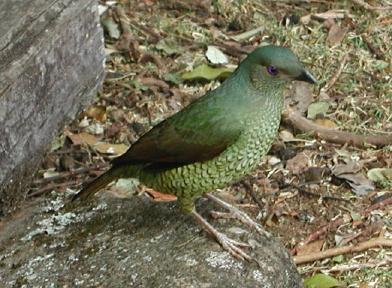 Ptilinorhynchus violaceus,
"Satin Bowerbird"
Ptilinorhynchus violaceus,
"Satin Bowerbird"
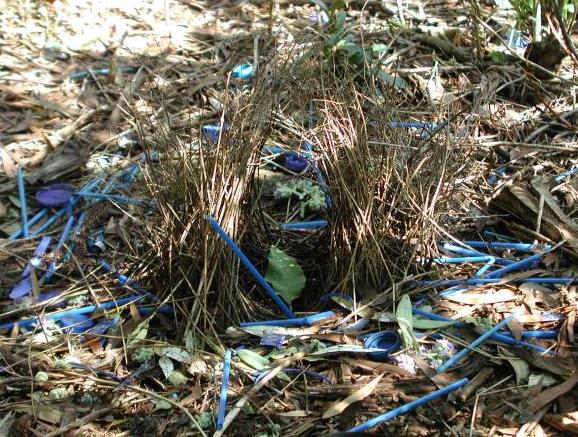
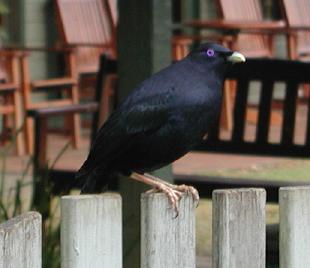
LAMINGTON NATIONAL PARK DAY 3: Several students took an early morning walk to see some of the many of the native birds. There are three bower birds in the park: Satin and Regent Bower Birds and the Catbird. The males of both the Satin and Regent Bower BIrd build bowers to attract females. This one at the left is the bower of a 25 year-old Regent nicknamed "Jock". These bowers are not nests (the female builds a nest and rears the young on her own). There is sexual dimorphism in these species. The Satin male is pictured above and the Satin female is shown below.
 Ptilinorhynchus violaceus,
"Satin Bowerbird"
Ptilinorhynchus violaceus,
"Satin Bowerbird"
Phylum: Chordata Class: Aves Family: Paradisaeidae
Length 28--32 cm. The male is a glossy blue-black with violet eye and the female is a dull blue gray green. Bowers are built by the male as focal points of territories where courting and mating occur. They are generally decorated with blue items and flowers (blue or yellow).
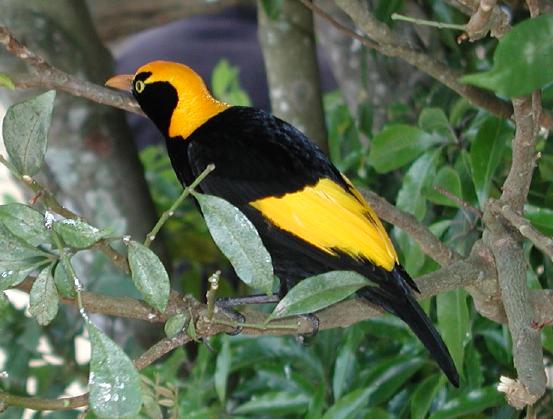
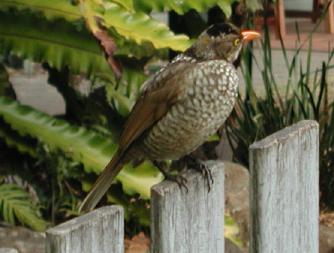
Sericulus chrysocephalus , "Regent Bowerbird"
Phylum: Chordata Class: Aves Family: ParadisaeidaeLength 24--28 cm. The male is a gold and black while the female has a black cap and a brown and gray scalloped back. The male's bower often consists of only a few twigs place along an "avenue." Its range is restricted to rainforests along the middle part of the east coast.
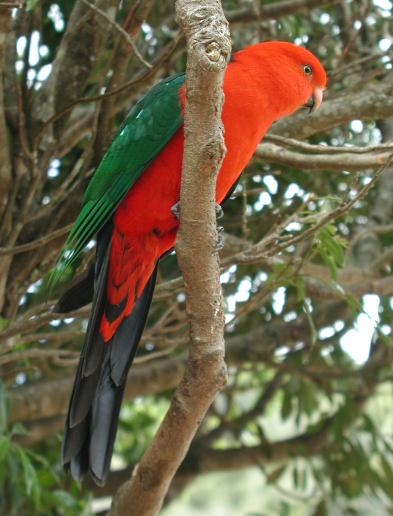
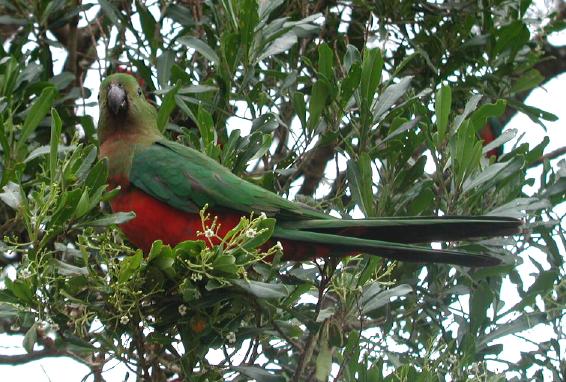
Alisterus scapularis, "King Parrot"
Phylum: Chordata Class: Aves Family: Polytelitidae
Length 41--44 cm. A large long-tailed parrot with red belly. The male has a bright red head and breast and a back of bright green. The female has a dull green head and back with a brownish breast. They travel in small flocks and feed mainly on dry seed on the ground. They are common in rainforest and wet schlerophyl and eucalypt forests in eastern Australia.
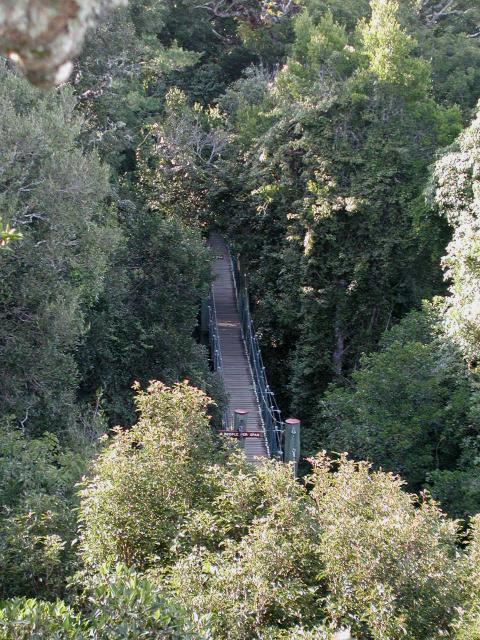
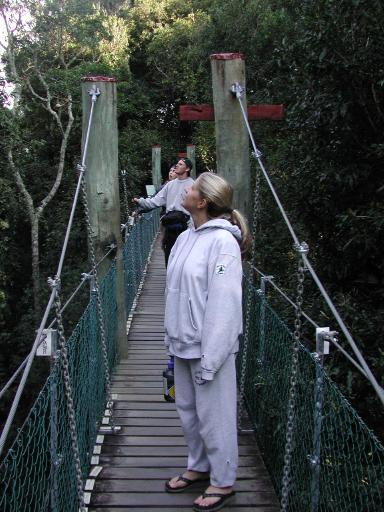
VIEW FROM THE BRIDGE: The Tree Top Walk consists of 9 bridges suspend up to
15 m above the forest floor. This provides a glimpse into the lower part of the canopy of
the forest.
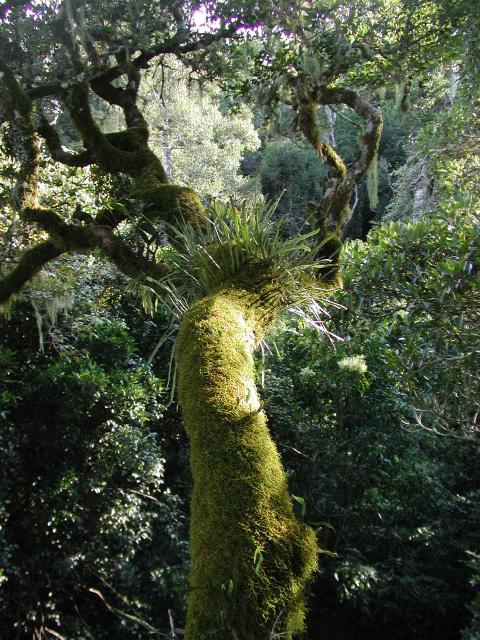
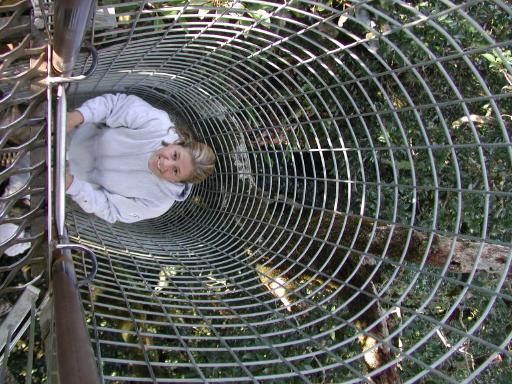
BIRD'S EYE VIEW: An observation deck 30 m high is located part way
along the bridge. The deck provides a view into the canopy of a Strangler Fig (see left)
and its many epiphytes. Early morning was a great time to admire the view.
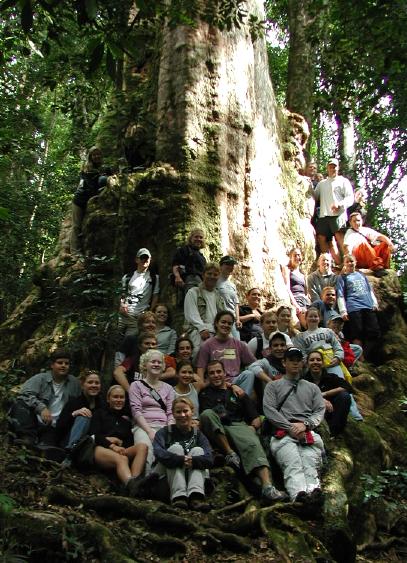 Past Disturbances:
Past Disturbances:
Lophostemon confertus (Brush Box) are often found in moist gullies and on rainforest margins. They are partially shade tolerant but will not normally regenerate within rainforests. A Brush Box stand is therefore likely to be indicative of a significant past disturbance.
We visited one such stand made up of a number of very large trees (900 to 1000 years old) and discussed the possible ecological circumstances that produced it.
It has become a tradition to take a group photo in at this Brush Box Tree along the track to Elabana Falls.
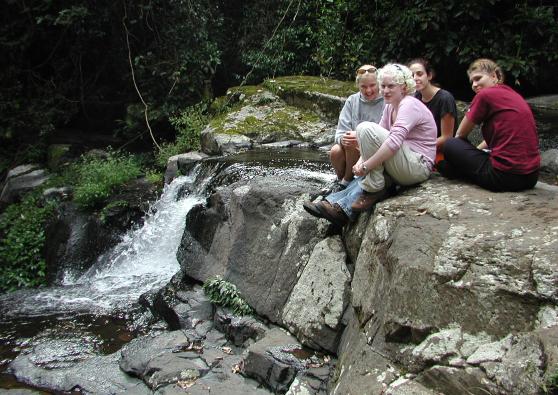 The morning was spent on a rainforest walk to Elabana Falls. Picnic Rock (left)
is just a few hundred
meters above the main falls.
The morning was spent on a rainforest walk to Elabana Falls. Picnic Rock (left)
is just a few hundred
meters above the main falls.
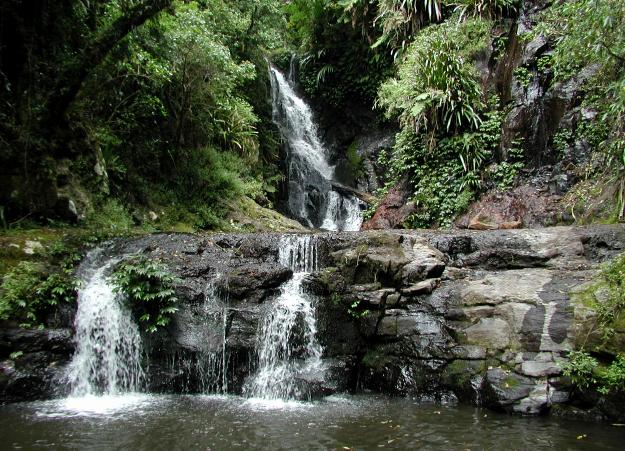
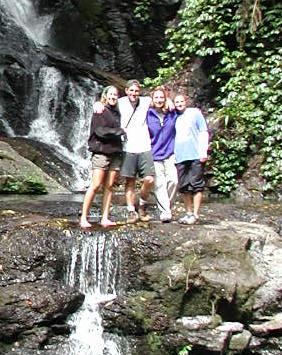
It is not hard to see why Elabana Falls (below) is featured on many posters and postcards.
Several students enjoyed a quick dip in the pool at the foot of the falls (Temp: 14 C or 57 F).
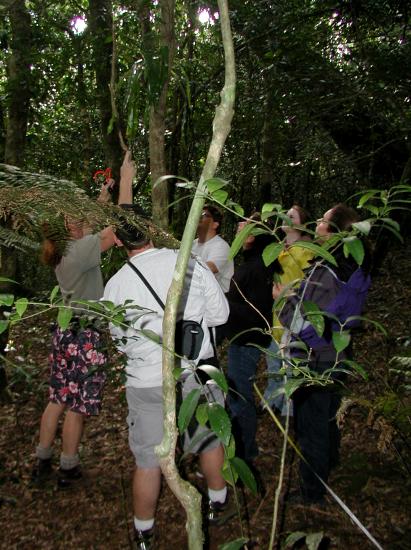
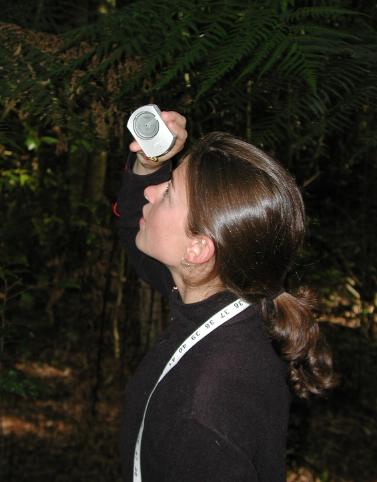
In the afternoon, we returned to the Wishing Tree Track to create a profile of the
rainforest at this location. Left: Mike uses a slingshot to bring down a leaf from
the canopy for species ID. Right: Using an inclinometer (and trigonometry) to determine tree height.
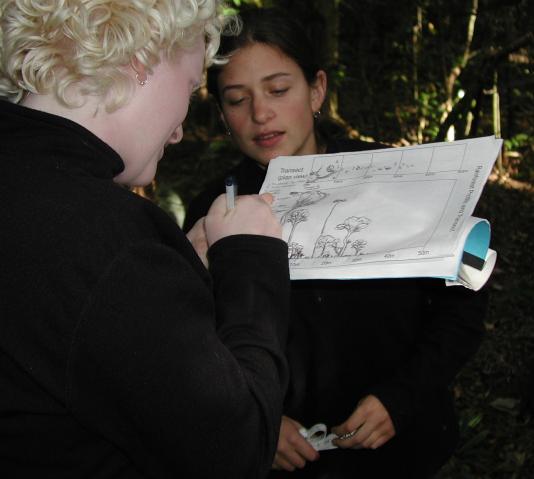 The result of the sampling and measurements was to create a profile
of all the vegetation along a 1 meter by 50 meter transect.
The result of the sampling and measurements was to create a profile
of all the vegetation along a 1 meter by 50 meter transect.